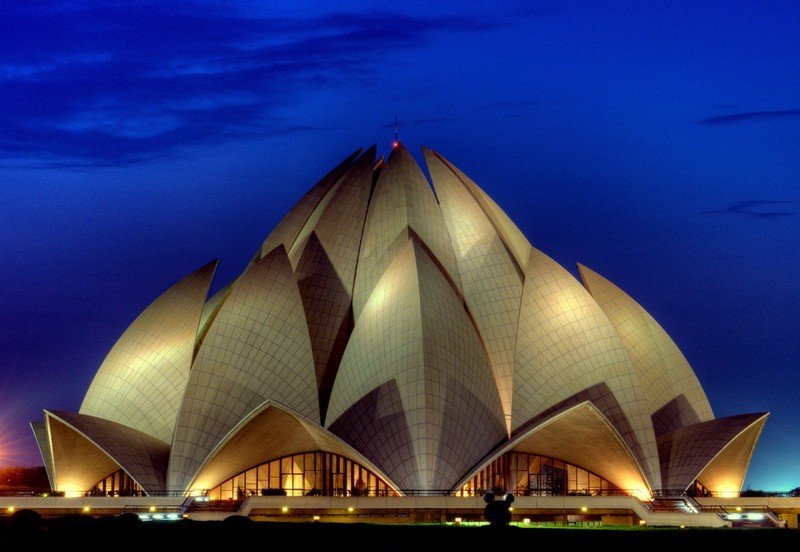It always bothers me that when people mention the architecture of Delhi, they always refer to Indo-Islamic architecture, or the Mughal architectural traditions, or the colonial style of architecture; nobody seems to notice the path-breaking structures created by the new breed of Indian (and a few overseas) architects during the post-Independence period. Yes, there was some confusion about the identity of post-Independence Delhi architecture, but there was no dearth of talent and creativity, vision, and passion. The conflict between modernism and historicism brought so many jewels, so many modern classics; Delhi re-defined modern architecture, it developed its own architectural style. We will describe over the next few posts some most striking structures architects created for posterity.
The Post & Telegraph building (Dak Tar Bhawan): Defining character of central Delhi

Habib Rahman, the Chief Architect, CPWD, was instrumental in giving central Delhi a unique character. His architecture mirrored the modernist ethos of the newly independent India. After doing his master’s from MIT, he had worked under several renowned architects, including Walter Gropius, that shaped his vision. The Post & Telegraph building (Dak Tar Bhawan) was the first of the many ground-breaking structures he designed- Rabindra Bhawan, Delhi Zoological Park, the World Health Organization building, and many more public buildings in the true spirit of independent India. The Dak Tar Bhawan is a truly magnificent structure that symbolized a new era in the history of the city of Delhi.
- The building was completed in 1955 with the objective of housing the GPO (General Post Office) and Post & Telegraph Directorate.
- The façade follows the curve of Patel chowk, and the building is in the shape of a post box, a revolutionary concept.
- The main lobby area contains the public post office area having one long curved counter.
- The roof and the rear section have open verandas and covered terraces. The house staff lunchrooms, a library, and a common recreation hall.
- The innovative use of an inner courtyard allows all offices and cubicles to have their independent windows for good lighting and ventilation.
India International Center: Great minds come together!
“The center’s beautiful, low profile buildings express the informal or romantic approach, where each function seeks out its own expression.”- Joseph Allen Stein.
The India International Center, situated in the heart of New Delhi, overlooks a magnificent landscape of gardens, including the Lodhi Garden, and 16th-century historic monuments. It’s a cultural hub for the city, a space where great minds from different spheres- authors, artists, lawyers, politicians, scholars, and social workers- come together for cultural and intellectual exchanges. Its non-affiliation to any political or religious agenda makes it an oasis in the real sense!
- Designed by Joseph Allen Stein, the campus has three main divisions- the programs division, the library, and the publications division.
- Stein conceptualized the project in his customary modernistic style.
- IIC incorporates many modernist features, like indoor-outdoor living, open plans, rectilinear massing, and lush greenery.
- A blend of local building materials gives the center a native fragrance.
- The major rectilinear massing with a few geometrical alterations creates statement facades, while the open pockets act as the foreground for mass gatherings.
- The main campus is encircled by several institutional buildings, also designed by Stein. The area is therefore fondly called “Steinabad”.
- The campus is spread over an area of 4.6 acres having three main functional streams- intellectual, cultural, and social.
- Many Indian design elements are incorporated to suit the local climate conditions, prominent being a series of semi-open spaces with light landscaping, forming the spill-overs.
A recent study actually listed more than one hundred post-independence buildings as “modern heritage structures” that must be preserved. Delhi has always been a unique city, an amazing mix of cultures and civilizations. Different styles of architecture have enriched the capital city for centuries. We shall continue to talk about more modern classics that give Delhi its unique character, its unforgettable fragrance.
 About the author
About the author
Sandeep Singh is an architect from IIT Roorkee. He is a prolific writer and a sensitive poet. His professional posts mostly cover the future in Architecture. His books are chiefly devoted to the inner and outer battles that a disabled person in India faces every day. His poems mostly reflect his inner world. He also works with the “Safe in India Foundation”, a social change initiative that strives to bring qualitative change to the lives of the Indian worker’s community

